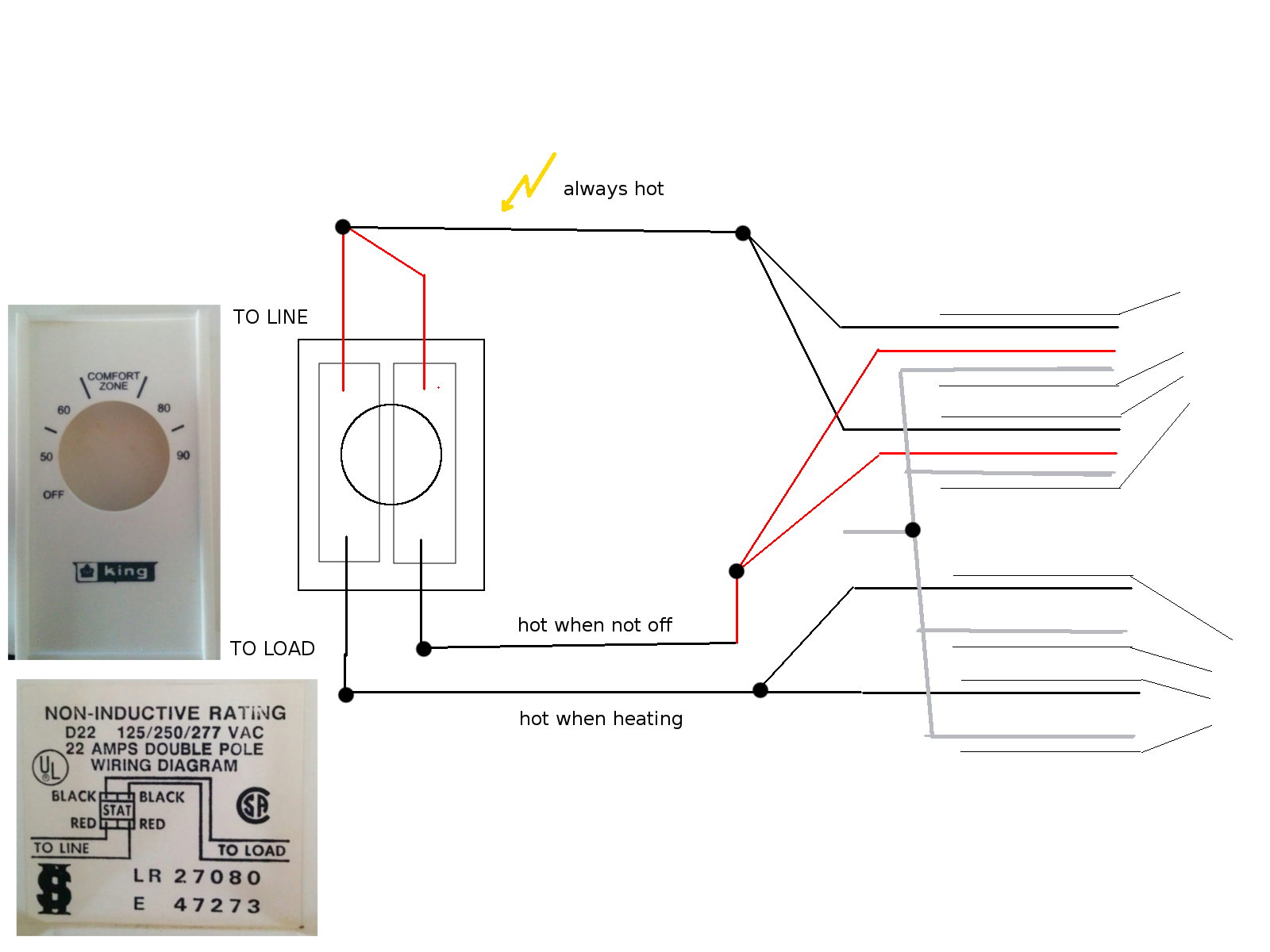I'm trying to replace a mechanical double pole thermostat with a programmable electronic one.
Existing setup:
The old thermostat model is 859M and it's wiring is pictured below. There's 2 pairs of cables coming out of the wall, two of them with 3 wires each (red, black, white) and another pair with 2 wires each (black and white). All white wires are screwed together, two black wires pictured at the top are hot (I'm assuming these come from the breaker panel). Thermostat has a true Off setting. When it is On (on the lowest temp) there's power on one of the black wires coming out of it, which seems to supply power to a fan in the room (since there's also power on the fan at that point). When thermostat is dialed further above room temperature there's also power on the other black wire coming out of it, and at that point pump is working in the basement supplying hot water to the tubes going through the fan in the room.
New thermostat:
The new one is Aube TH115 and is pictured further below.
Wiring manual suggests using 4 separate wires to connect it, however one of the connecting options I tried failed to turn the heater and fan on, even though the thermostat was powered.
I wonder what is the correct wiring in my case and specifically whether L1 and L2 wires need to be connected to the same incoming hot wire.


